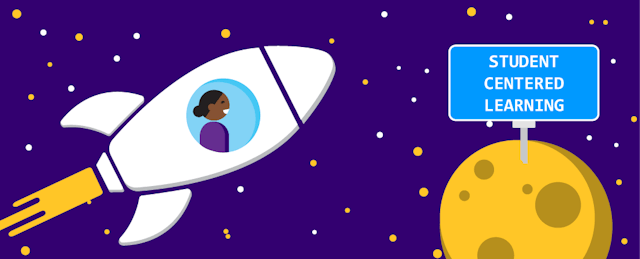For student-centered learning to thrive, teachers need to learn new ways to manage their classrooms, such as using data regularly to identify each student’s learning needs and targeting their instruction to each child accordingly.
In short, moving to a student-centered learning environment requires a profound shift in classroom culture and management. That’s not an easy change for educators to make—but here are four strategies that can help.
Start slowly.
School and district leaders should help their teachers learn to release control gradually, says Rachael Turner, Transformation Manager for School Improvement Network. One way to do this is by incorporating project-based learning (PBL) into instruction.
For instance, teachers might give their students three options for how to demonstrate mastery of a lesson. This lets students have some control over their learning, while still giving teachers control over the final product. Eventually, teachers can transition to a rubric-based PBL model, in which students can choose any kind of product they want in order to demonstrate mastery—as long as they meet the criteria spelled out in the rubric.
Regardless of how school and district leaders choose to integrate student-centered learning, “we must show teachers how students can own those processes,” Turner says.
Build on what teachers are already doing.
In many schools, teachers are already looking at data or using differentiation to meet students’ needs. “We can build on their knowledge of their craft to take personalized learning to another level,” Turner said.
For example, teachers might be using data to group students for acceleration or remediation. Teachers also might be be holding class meetings or writing class goals at the beginning of the year. School and district leaders can “shift the focus of these meetings,” Turner said, to “understanding individual differences in students, how we all learn differently, and how students can become responsible owners of their own learning.”
She added: “We don’t want to ‘throw away’ the learning the teachers have already gained. We want to build on what is already there, so as not to overwhelm teachers and students.”
Give them tools to help personalize instruction.
It’s impossible for teachers to personalize instruction for every child and still get through all of the curriculum they have to cover without using some kind of technology-based option, like software that can quickly hone in on students’ needs and deliver highly targeted instruction that students can work through at their own pace.
For instance, School Improvement Network offers an online platform to help teachers personalize instruction, called Edivate Learn. This platform provides content instruction to students at the appropriate level, which frees up teachers to provide acceleration, remediation, and one-on-one instruction as needed.
Provide ongoing support.
Not surprisingly, this kind of transformational change isn’t possible unless teachers also receive ongoing support—not just a one-time, sit-and-get workshop, but a sustained effort over time.
When School Improvement Network works with districts to help implement student-centered learning, the company addresses not only what happens in the classroom, but also how administrators support and evaluate their teachers, Turner said.
“One of the key points we stress in administrator training is the need to consistently perform temperature checks with their staff,” she said. “Just as learning is personalized for students, we need to personalize training for teachers. By meeting their individual needs as teachers, we can provide support where they need it most.”



